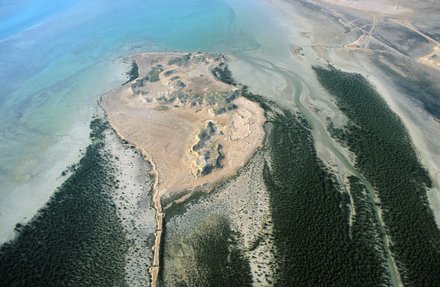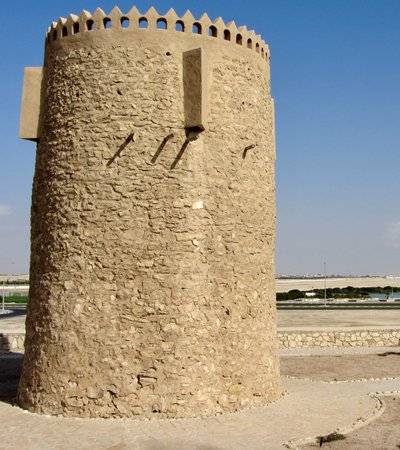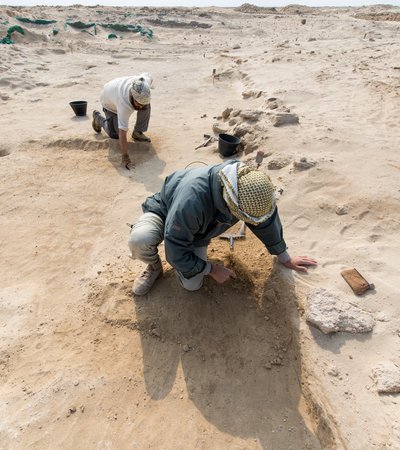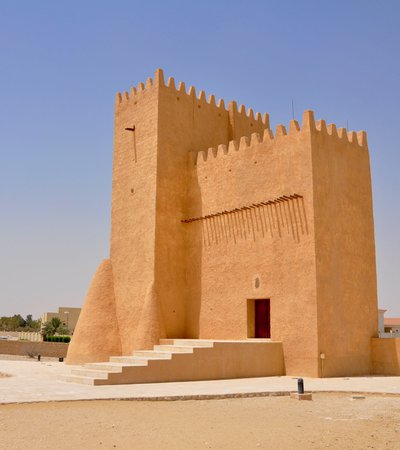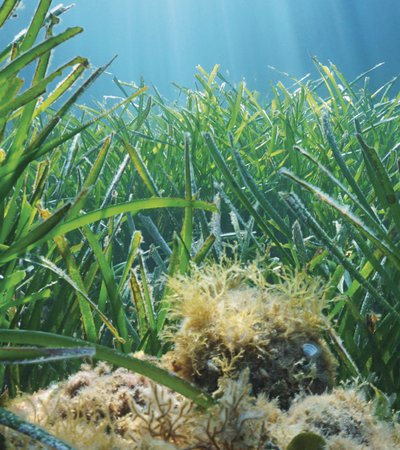Jazirat Bin Ghannam sits in a sheltered location inside Khor Al Shaqiq Bay. There is no evidence to suggest the island was ever permanently inhabited, but it was visited for specific reasons at different periods. It was a place of transit, a temporary campsite for trade with Bahrain, and was used by fishermen or pearl divers as early as the beginning of the 2nd millennium BCE. Later, the island was a production site for red-purple dye from shellfish during the Kassite Period. Studies have also found that it was a camp for pearling expeditions during the Sassanian Period and a fishing outpost in the Late Islamic Period.
Excavations have revealed a midden (shell heap) containing the remains of around 2.9 million individual crushed shells of the sea snail Thais savignyi, along with large ceramic vats that were probably used to macerate the crushed mollusks. This type of shellfish lives under rock in the intertidal basin and produces a red to dark-red dye.
The island is great to explore for its natural heritage, including mangroves in shallow lagoons, small fish and crabs, and a number of migratory birds like flamingos and herons that travel there during the winter months of November to February.
